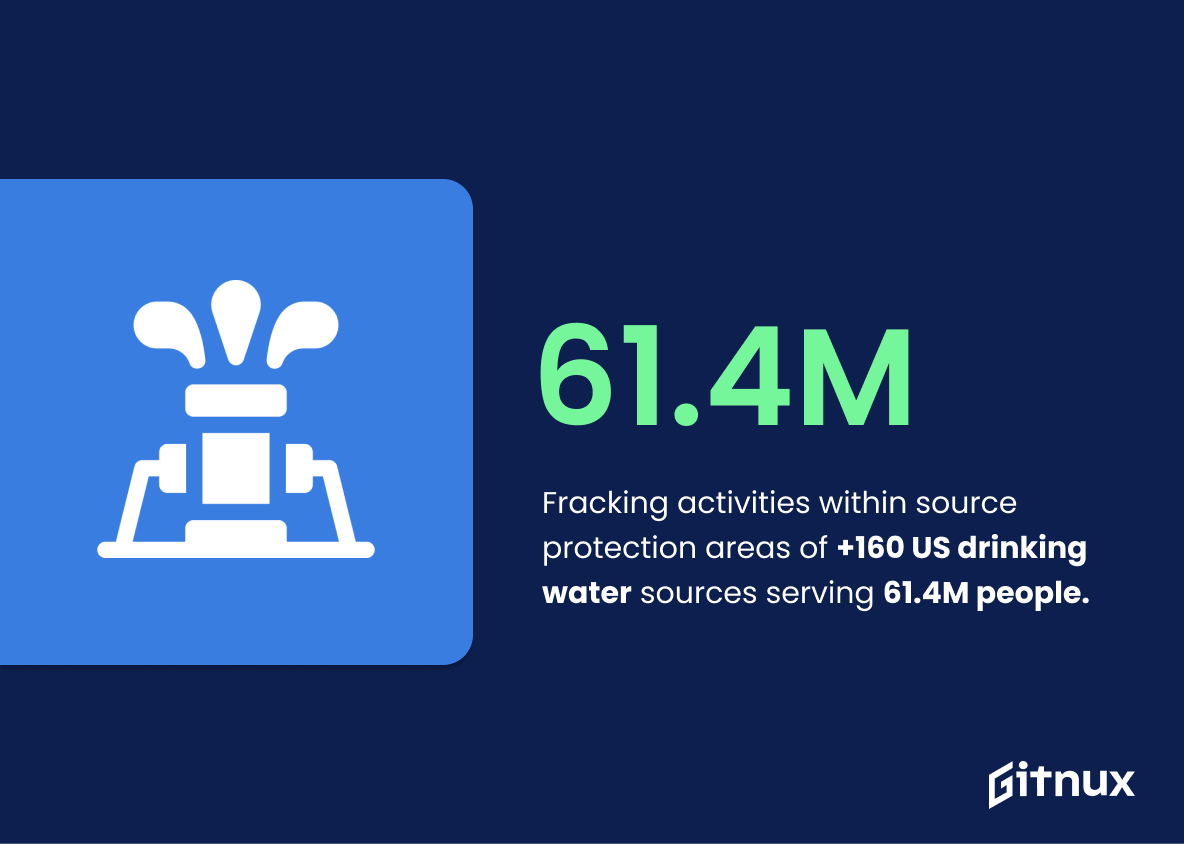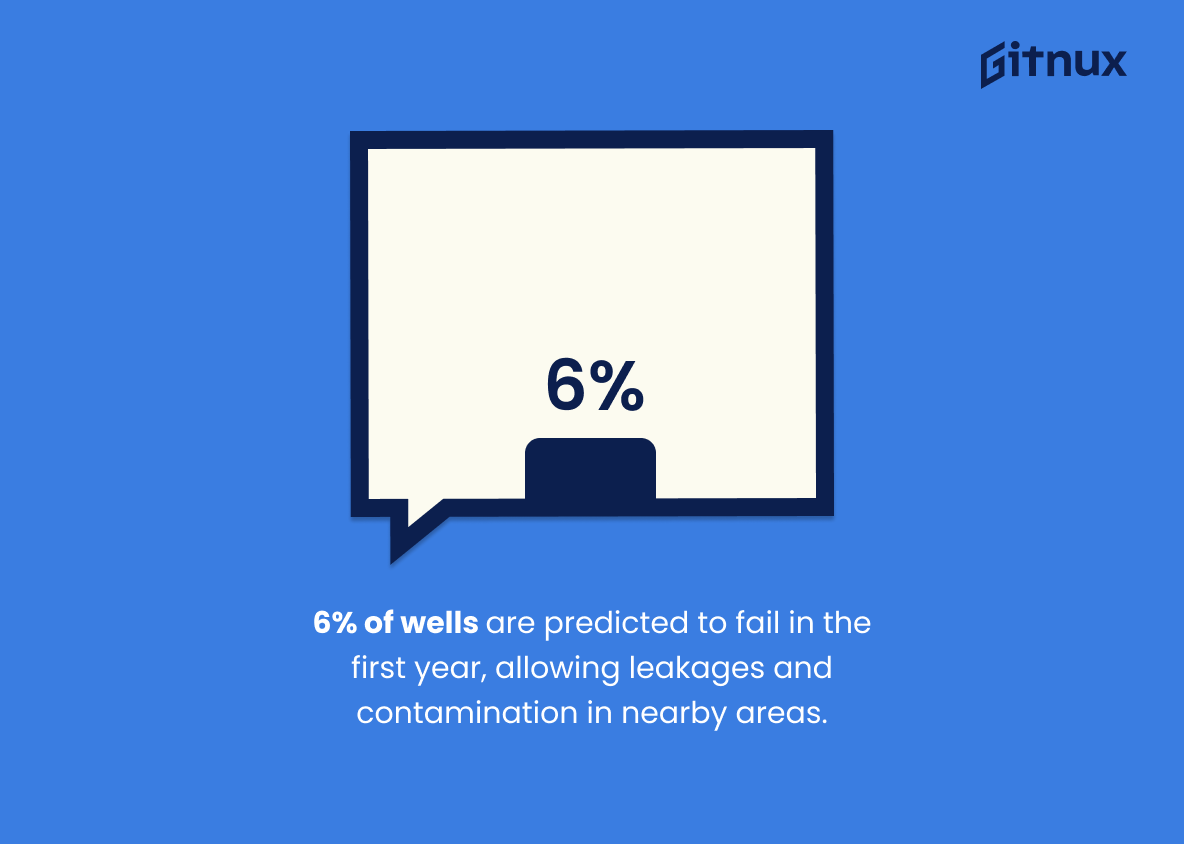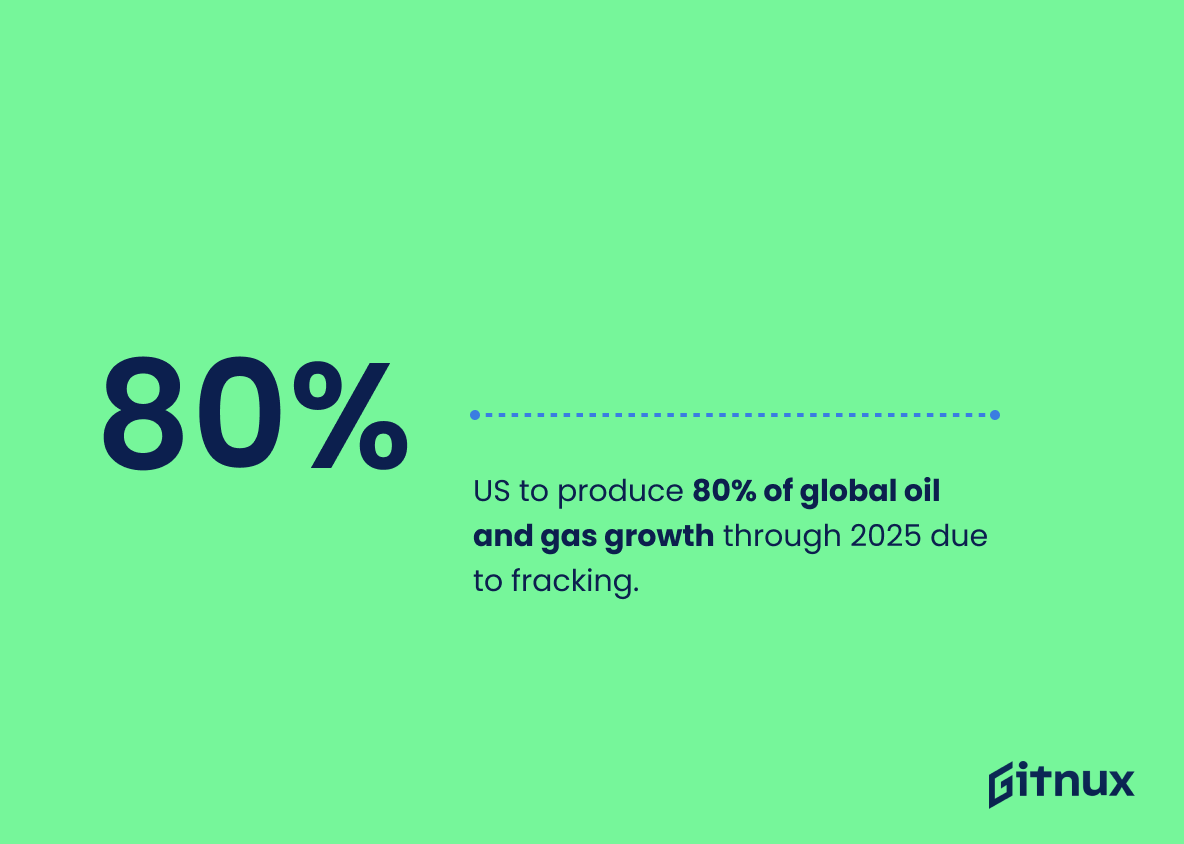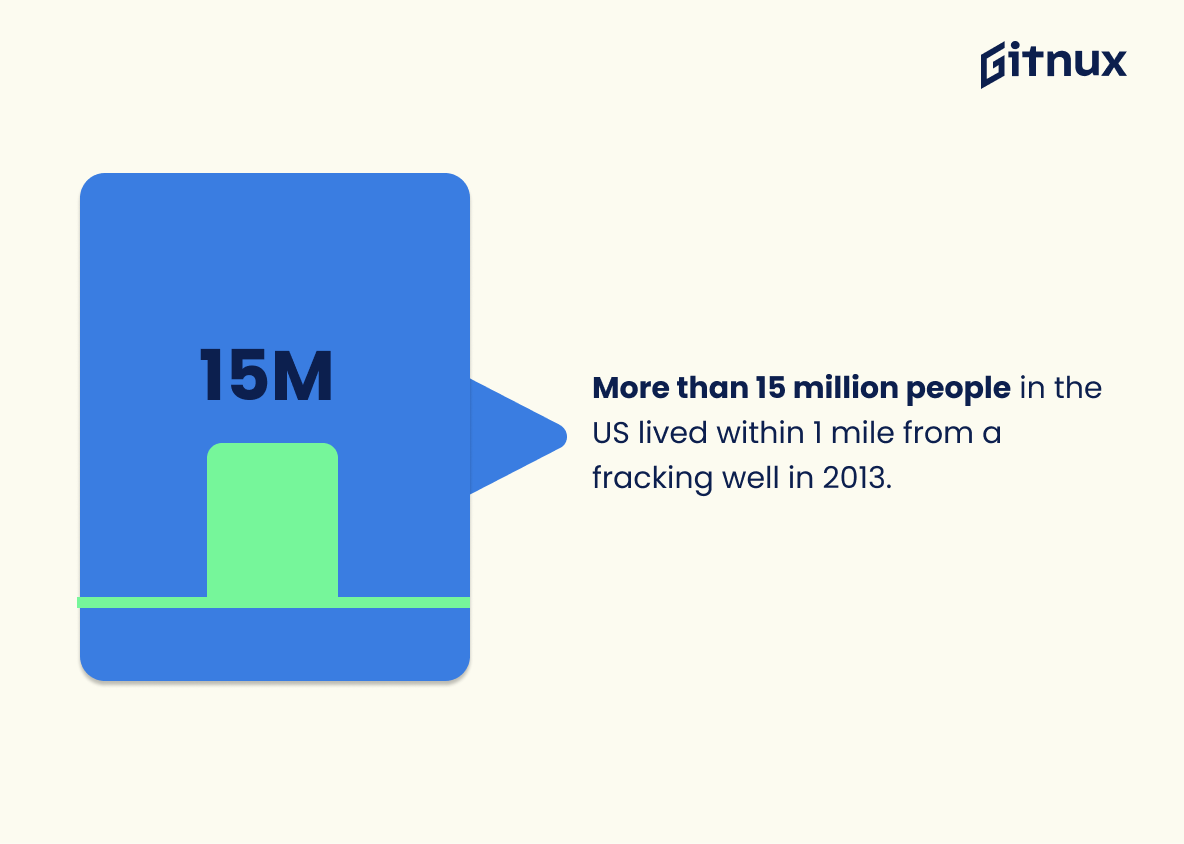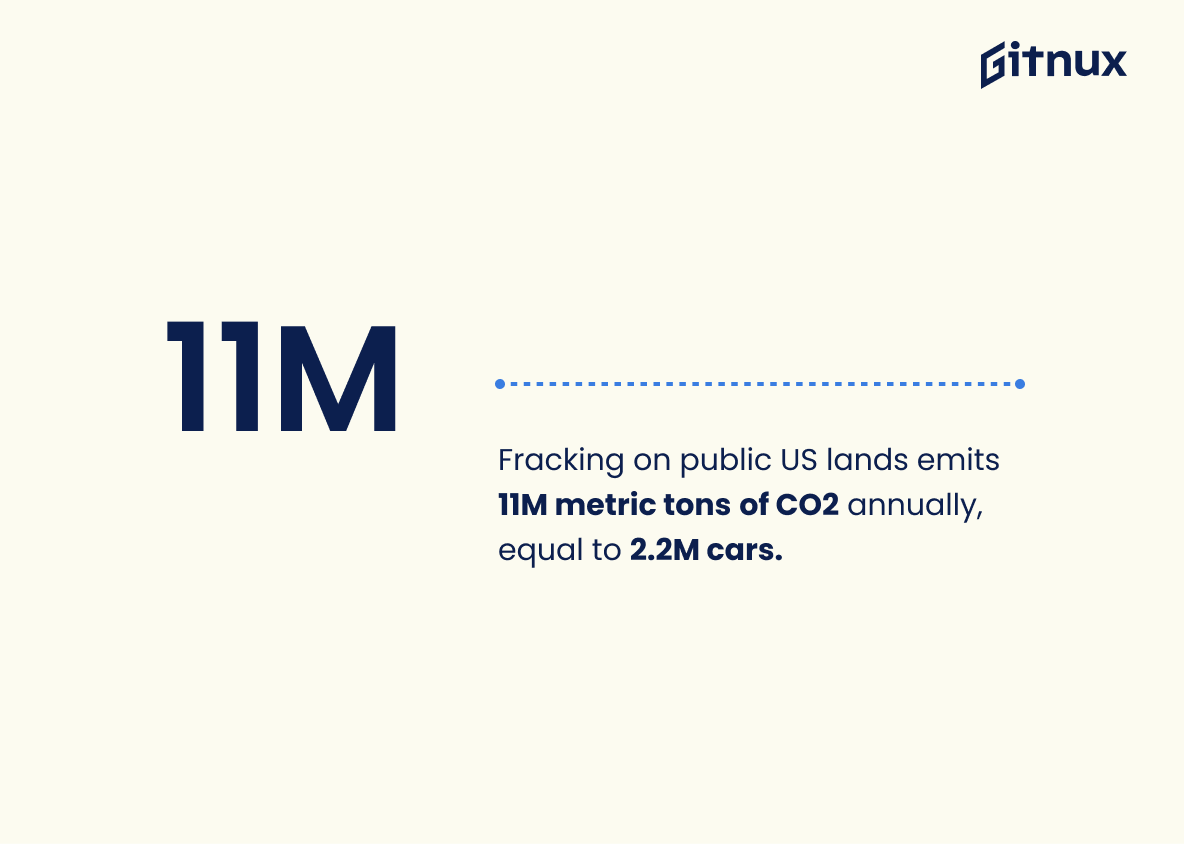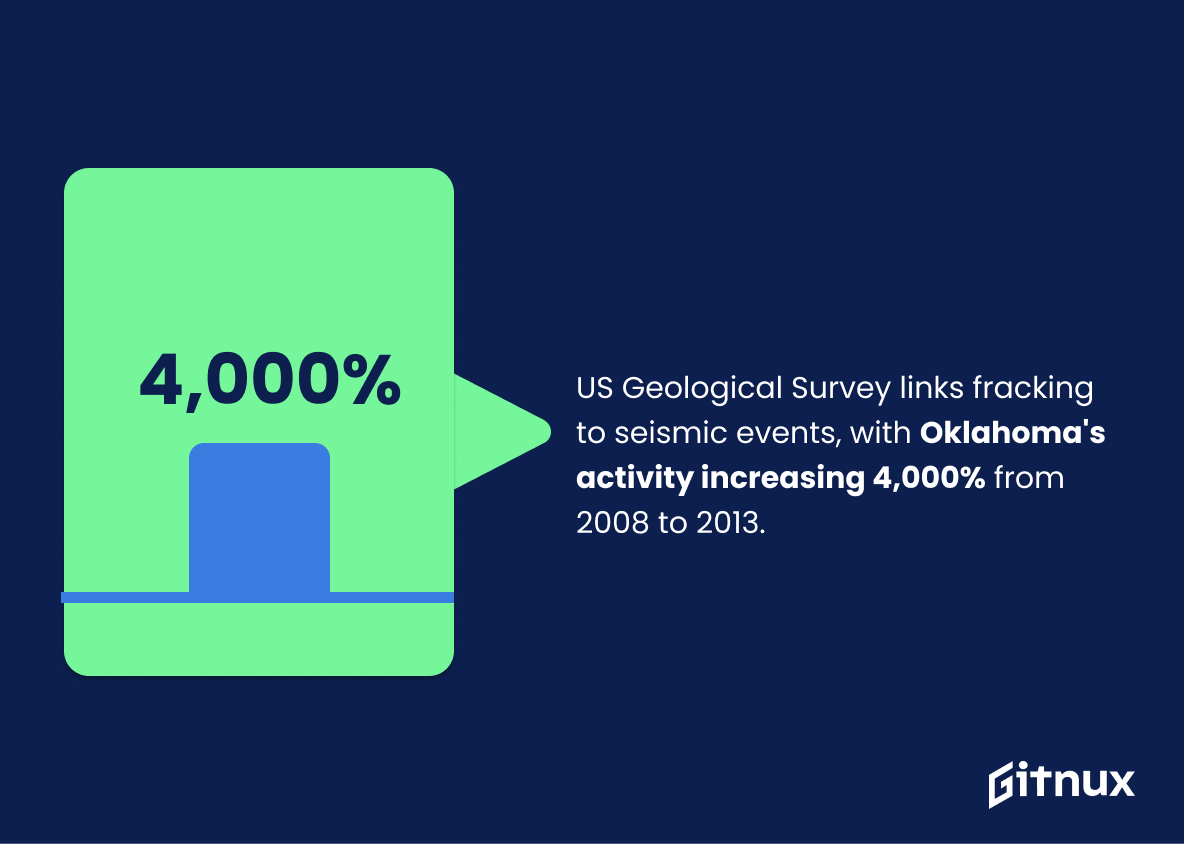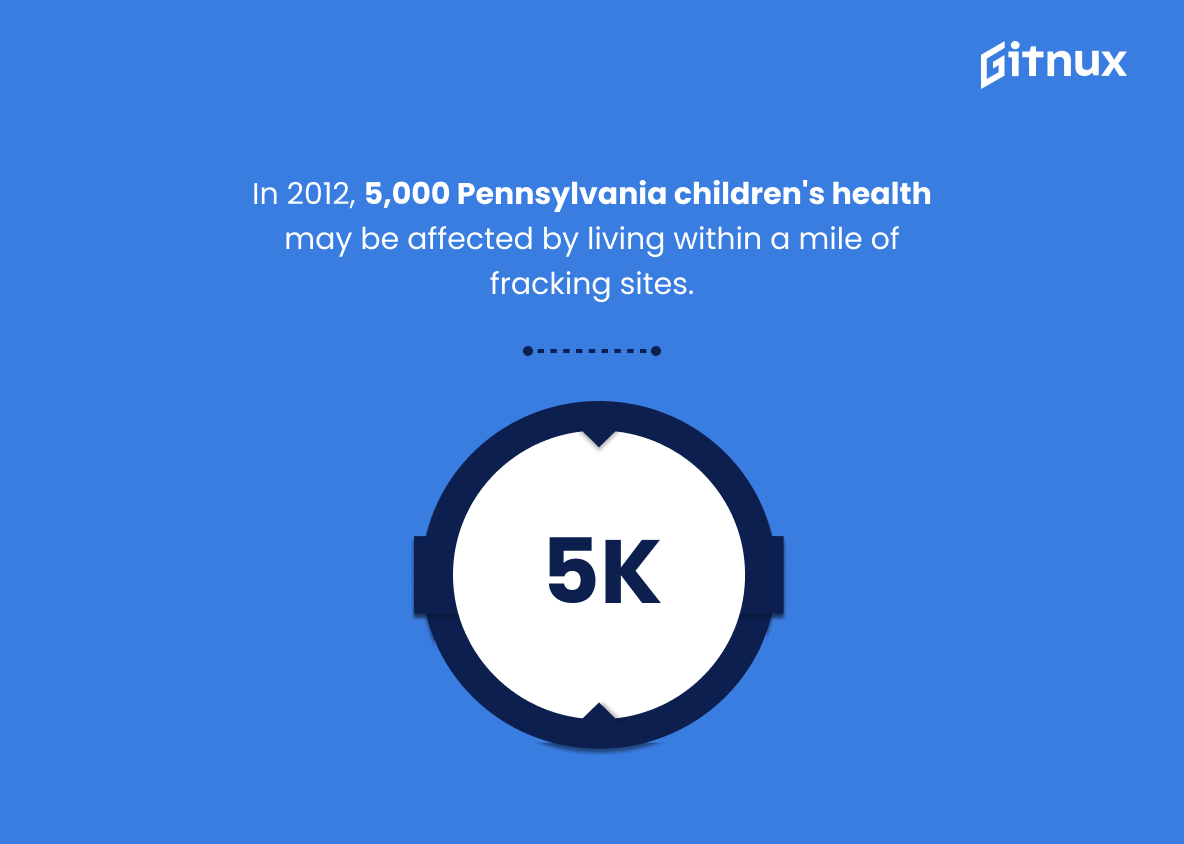The statistics on fracking contamination are alarming. From the 69% of Americans who oppose allowing fracking near aquatic environments, residential areas, or protected lands to the 44% of chemicals in air and water posing a potential environmental or human health risk, it is clear that this practice has serious consequences for our environment and public health. In addition to these figures, there are many other concerning facts about hydraulic fracturing: 17 million people living within one mile of an active oil or gas well; 25% of fracking chemicals potentially dangerous to humans; methane contamination increasing by 17 times near sites; only 35% favoring increased use; 34 seismic events generated in UK alone; more than 160 drinking water sources affected globally with 6 percent wells predicted to fail in first year due to leakage and contamination nearby. The US is expected produce nearly 80 percent additional oil and gas production through 2025 due its reliance on hydraulic fracturing activities which have been linked with 11 million metric tons carbon dioxide emissions annually from public lands – equivalent 2.2 million cars – as well as 1,200 spills reported between 2008-2013 in Colorado alone. Furthermore, Oklahoma’s seismic activity has increased 4 000%, while 5 000 Pennsylvania children were found be at risk 2012 when living within a mile from such sites according 2016 study finding 44%.
This statistic is a stark reminder of the potential dangers of fracking. It highlights the fact that fracking can lead to a significant increase in methane contamination in drinking water, which can have serious health implications for those living near fracking sites. This statistic serves as a warning to those considering fracking and should be taken into account when making decisions about the practice.
Only 35% of Americans favor the increased use of hydraulic fracturing.
This statistic is a telling indication of the public’s opinion on hydraulic fracturing, and is thus an important factor to consider when discussing fracking contamination statistics. It shows that the majority of Americans are not in favor of the increased use of hydraulic fracturing, which could be a sign that the public is aware of the potential risks associated with the practice. This statistic is thus a valuable piece of information when discussing the potential environmental impacts of fracking.
Fracking Contamination Statistics Overview
More than 160 drinking water sources serving 61.4 million people in the US had fracking activities within their source protection area.
This statistic is a stark reminder of the potential for fracking activities to contaminate drinking water sources, impacting the health and wellbeing of over 61 million people in the US. It serves as a powerful illustration of the need for greater regulation and oversight of fracking activities to ensure the safety of our drinking water.
6% of wells are predicted to fail in the first year, allowing leakages and contamination in nearby areas.
This statistic is a stark reminder of the potential environmental damage that can be caused by fracking. With 6% of wells predicted to fail in the first year, it is clear that the risk of leakages and contamination in nearby areas is a real and present danger.
The International Energy Agency expects the US to produce nearly 80% of additional oil and gas production globally through 2025 due to fracking.
This statistic is a stark reminder of the immense power of fracking in the US energy sector. It highlights the fact that the US is set to dominate the global oil and gas production landscape in the coming years, and that the potential environmental impacts of fracking must be taken into account. The statistic serves as a warning that, if not properly regulated, fracking could have a devastating effect on the environment and public health.
More than 15 million people in the US lived within 1 mile from a fracking well in 2013.
This statistic is a stark reminder of the potential for fracking contamination to affect a large number of people. It highlights the fact that millions of people are living in close proximity to fracking wells, and thus are at risk of being exposed to the potentially hazardous chemicals used in the process. This statistic serves as a warning to those living near fracking wells to be aware of the potential risks associated with the process.
A 2011 study found high methane concentrations in residential drinking water wells near fracking sites within active extraction areas.
This statistic is a powerful indicator of the potential environmental impacts of fracking. It demonstrates that fracking can lead to contamination of drinking water sources, which is a major concern for many people. This statistic is especially important because it shows that the contamination is not limited to the immediate area of the fracking site, but can extend to residential areas. This highlights the need for further research and regulation to ensure that fracking is conducted safely and responsibly.
Pipeline leaks in the US due to hydraulic fracturing are 71% higher than estimated by the EPA.
This statistic is a stark reminder of the potential environmental damage caused by hydraulic fracturing. It highlights the fact that the EPA’s estimates may not be accurate, and that the actual amount of pipeline leaks due to fracking could be much higher than initially thought. This is an important statistic to consider when discussing the potential risks of fracking, and it should be taken into account when making decisions about the use of this technology.
As of 2020, there are about 8,000 fracking sites in the US.
This statistic is a stark reminder of the prevalence of fracking in the US, and the potential for contamination of the environment. It serves as a call to action for those concerned about the effects of fracking on the environment, and provides a baseline for tracking the growth of fracking sites in the US.
Fracking wells on public lands in the US release 11 million metric tons of carbon dioxide annually, equivalent to emissions from 2.2 million cars.
This statistic serves as a stark reminder of the environmental impact of fracking on public lands in the US. It highlights the sheer amount of carbon dioxide released into the atmosphere each year, which is equivalent to the emissions from 2.2 million cars. This is a significant amount of pollution that can have a detrimental effect on the environment and public health.
According to the US Geological Survey, hydraulic fracturing is linked to seismic events, with Oklahoma’s seismic activity increasing by 4,000% between 2008 and 2013 due to fracking.
This statistic is a stark reminder of the potential consequences of fracking. It shows that the seismic activity in Oklahoma increased drastically in a short period of time due to fracking, which could be indicative of the environmental damage that fracking can cause. This statistic is an important piece of evidence that should be taken into consideration when discussing the potential risks of fracking.
In 2012, the health of approximately 5,000 Pennsylvania children was found to be potentially affected by living within a mile of fracking sites.
This statistic is a stark reminder of the potential health risks associated with living near fracking sites. It serves as a warning to those living in Pennsylvania and other areas where fracking is taking place, that their health and the health of their children could be at risk. It also highlights the need for further research into the long-term effects of fracking on human health.
Conclusion
The statistics presented in this blog post demonstrate the potential risks associated with hydraulic fracturing activities. From contamination of drinking water sources to increased seismic activity, it is clear that fracking can have a significant impact on both human health and the environment.
The data also shows that many Americans are opposed to expanding offshore drilling or allowing fracking near aquatic environments, residential areas, or protected lands due to these concerns. It is important for governments and industry stakeholders alike to take steps towards mitigating any negative impacts from hydraulic fracturing operations while still providing access to energy resources.
References
0. – https://www.usgs.gov
1. – https://www.pnas.org
2. – https://www.biologicaldiversity.org
3. – https://www.eia.gov
4. – https://www.tandfonline.com
5. – https://www.science.sciencemag.org
6. – https://www.pewresearch.org
7. – https://www.ehjournal.biomedcentral.com
8. – https://www.iea.org
